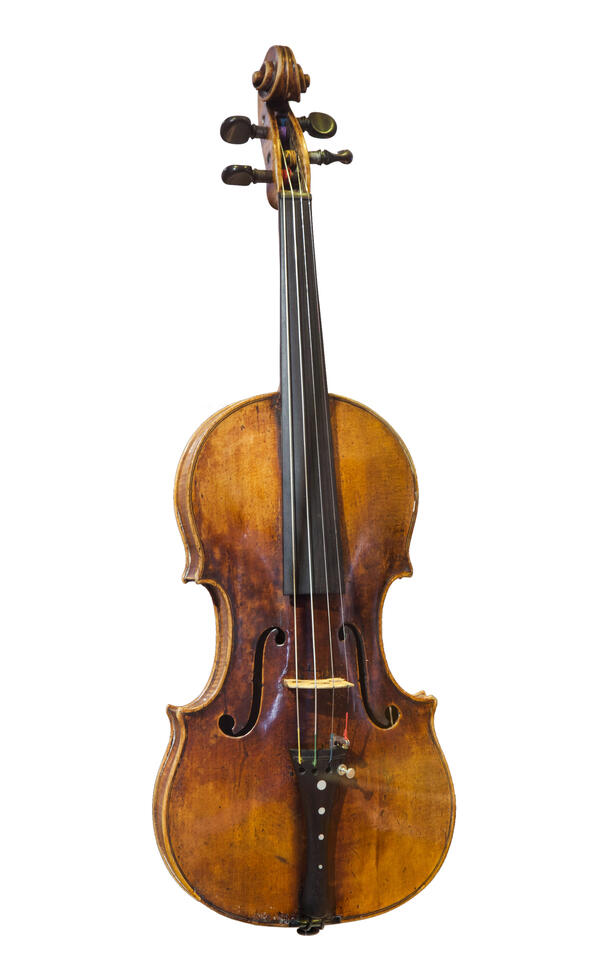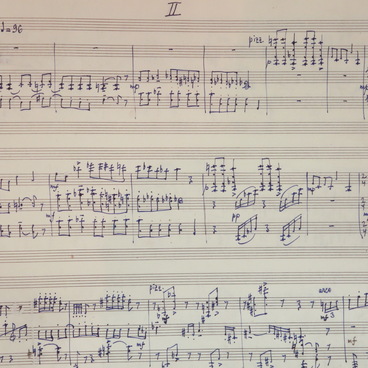The violin on display was created by the famous Italian craftsman Antonio Stradivari in 1736, a year before his death. At the time, Stradivari was 92, and that year he produced only four violins.
Like two other famous luthiers Nicolò Amati and Andrea Guarneri, Stradivari was born in Cremona. He started out as a woodworker and at the same time studied under Nicolò Amati. Stradivari’s early violins were based on his teacher’s models and are therefore referred to as “amatisé”. Later, Stradivari designed his own lengthened violin model known as “allongé”. Apart from violins, he also produced violas, cellos, harps, and guitars.
Stradivarius violins are still admired for their unparalleled quality. There was a legend that Stradivari achieved the perfect sound for his instruments by using a special varnish with a secret composition. However, this theory was debunked by later research. Stradivari labeled his instruments with the Latin inscription “Antonius Stradivarius”. This inscription can also be seen inside the violin from the museum’s collection. The violin is made of spruce and maple wood. It is well-preserved and can still be used for playing.
The violin used to belong to David Oistrakh, a friend of Prokofiev and an unparalleled performer of his violin works. Oistrakh premiered both of Prokofiev’s violin and piano sonatas. Violin Sonata No. 1 was dedicated to Oistrakh, while Violin Sonata No. 2 was finished with his help.
In 1936, Oistrakh and Prokofiev lived in the same building on Chkalov Street in Moscow. The two musicians were also united by their love of chess. In 1937, they had a famous chess game where the loser had to play a concert at the Central Art Workers’ Club. Oistrakh outclassed Prokofiev in a 4-3 win.
Prokofiev’s second wife Mira Mendelson told an anecdote about Oistrakh,
Like two other famous luthiers Nicolò Amati and Andrea Guarneri, Stradivari was born in Cremona. He started out as a woodworker and at the same time studied under Nicolò Amati. Stradivari’s early violins were based on his teacher’s models and are therefore referred to as “amatisé”. Later, Stradivari designed his own lengthened violin model known as “allongé”. Apart from violins, he also produced violas, cellos, harps, and guitars.
Stradivarius violins are still admired for their unparalleled quality. There was a legend that Stradivari achieved the perfect sound for his instruments by using a special varnish with a secret composition. However, this theory was debunked by later research. Stradivari labeled his instruments with the Latin inscription “Antonius Stradivarius”. This inscription can also be seen inside the violin from the museum’s collection. The violin is made of spruce and maple wood. It is well-preserved and can still be used for playing.
The violin used to belong to David Oistrakh, a friend of Prokofiev and an unparalleled performer of his violin works. Oistrakh premiered both of Prokofiev’s violin and piano sonatas. Violin Sonata No. 1 was dedicated to Oistrakh, while Violin Sonata No. 2 was finished with his help.
In 1936, Oistrakh and Prokofiev lived in the same building on Chkalov Street in Moscow. The two musicians were also united by their love of chess. In 1937, they had a famous chess game where the loser had to play a concert at the Central Art Workers’ Club. Oistrakh outclassed Prokofiev in a 4-3 win.
Prokofiev’s second wife Mira Mendelson told an anecdote about Oistrakh,




